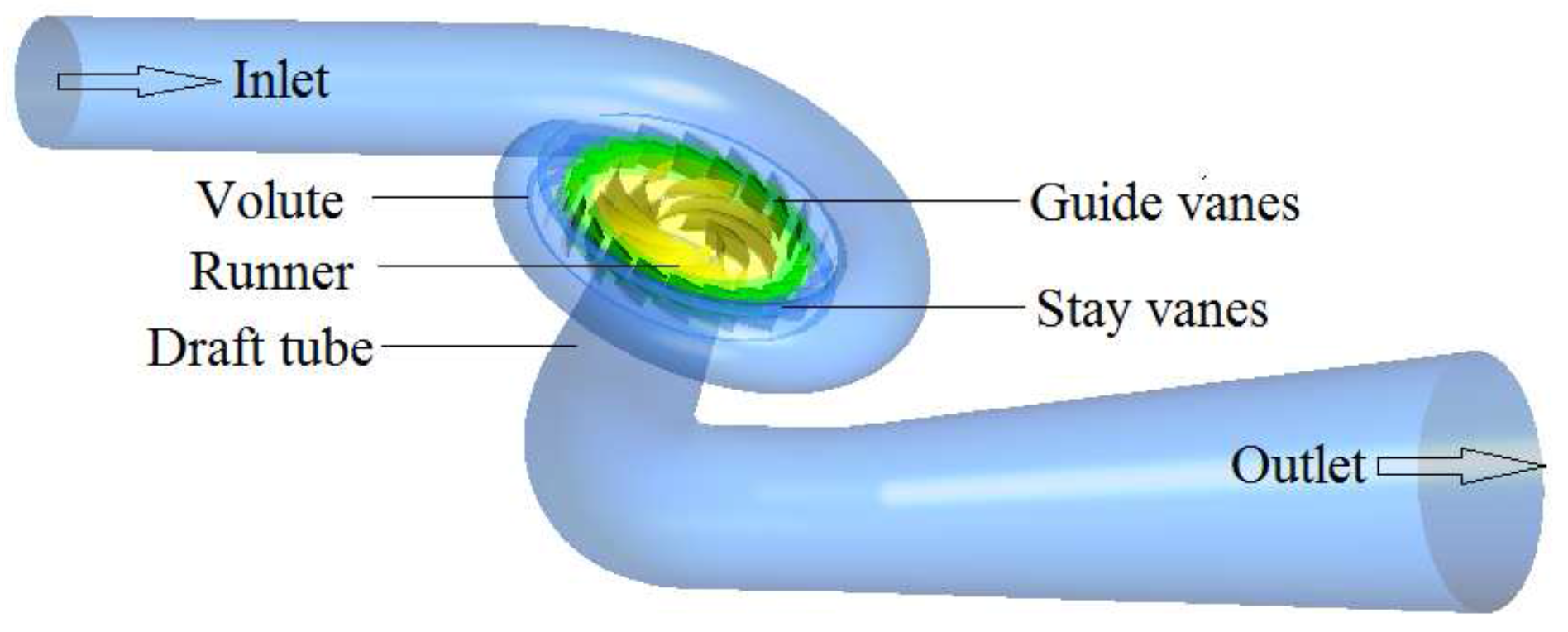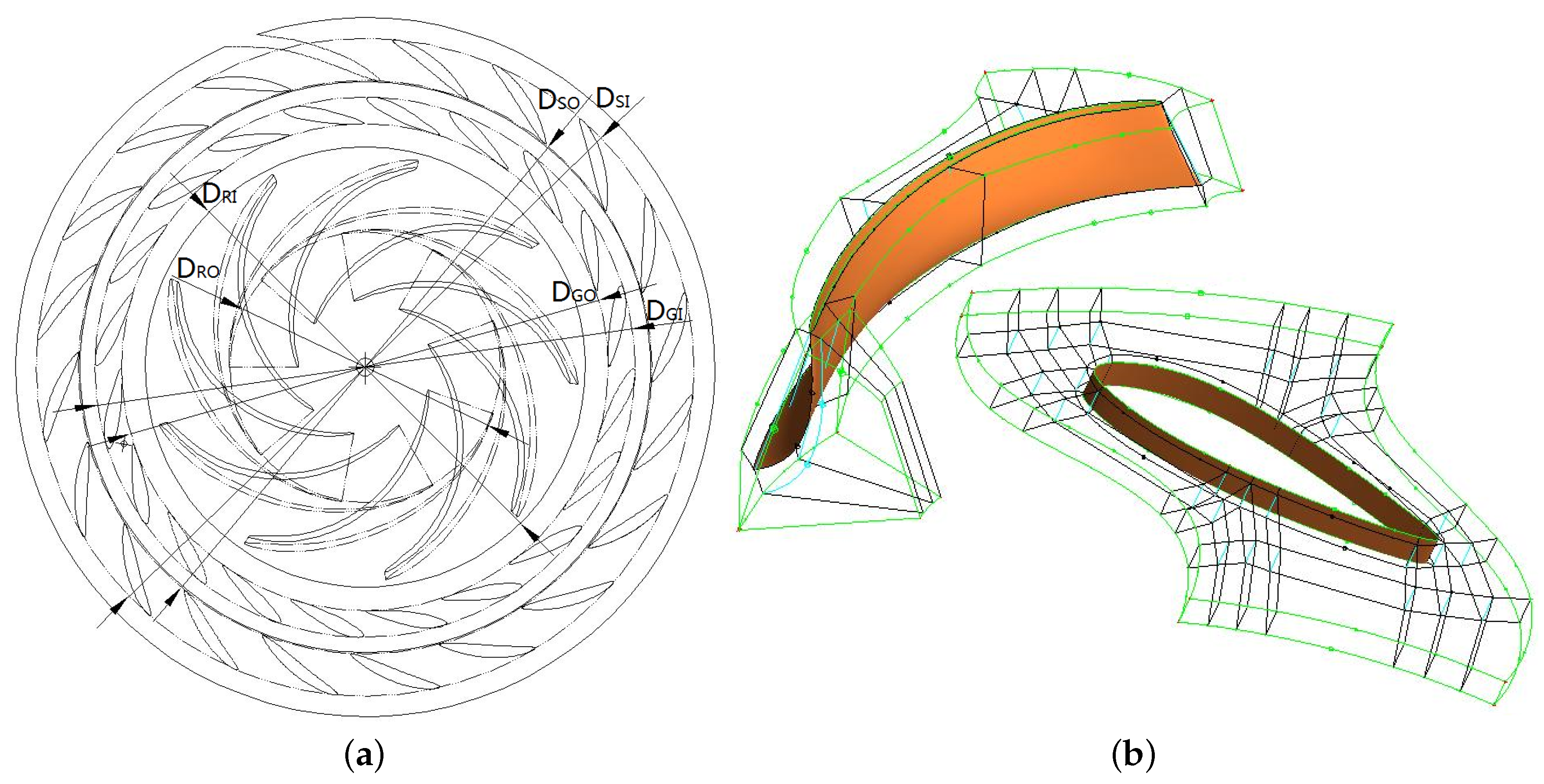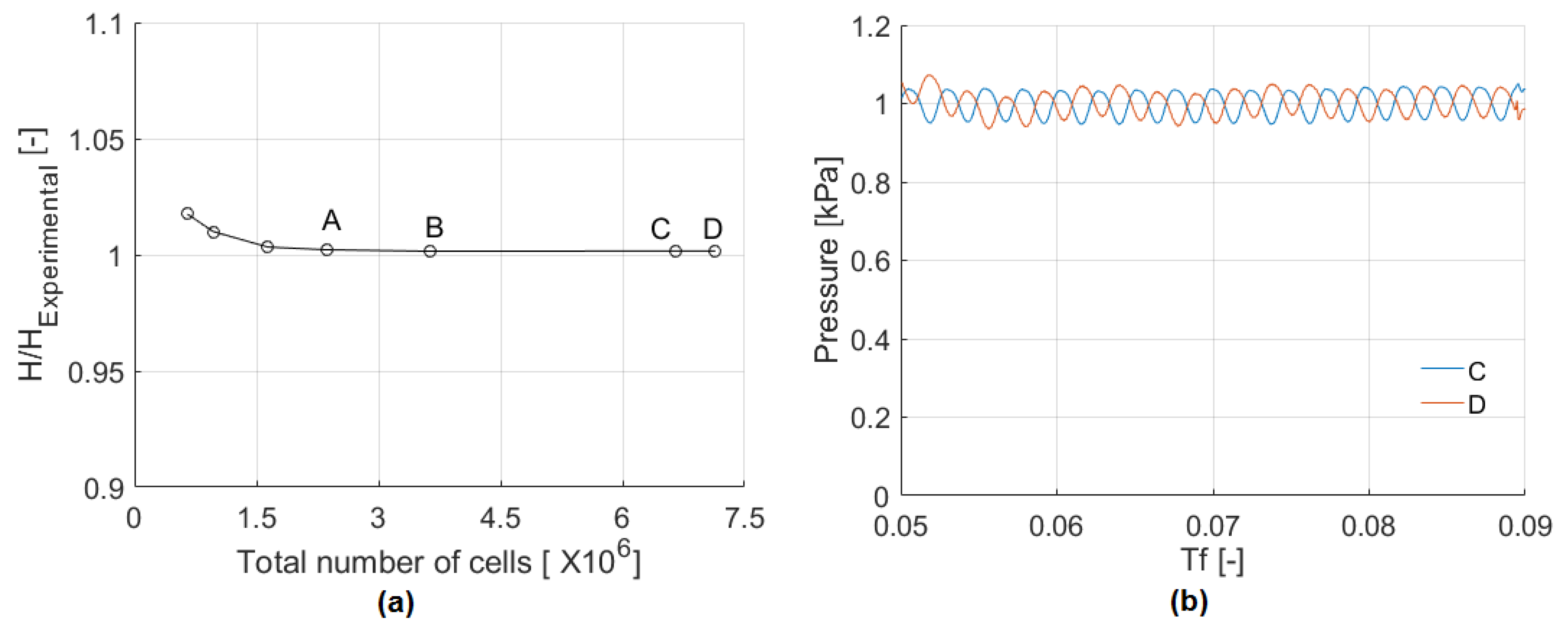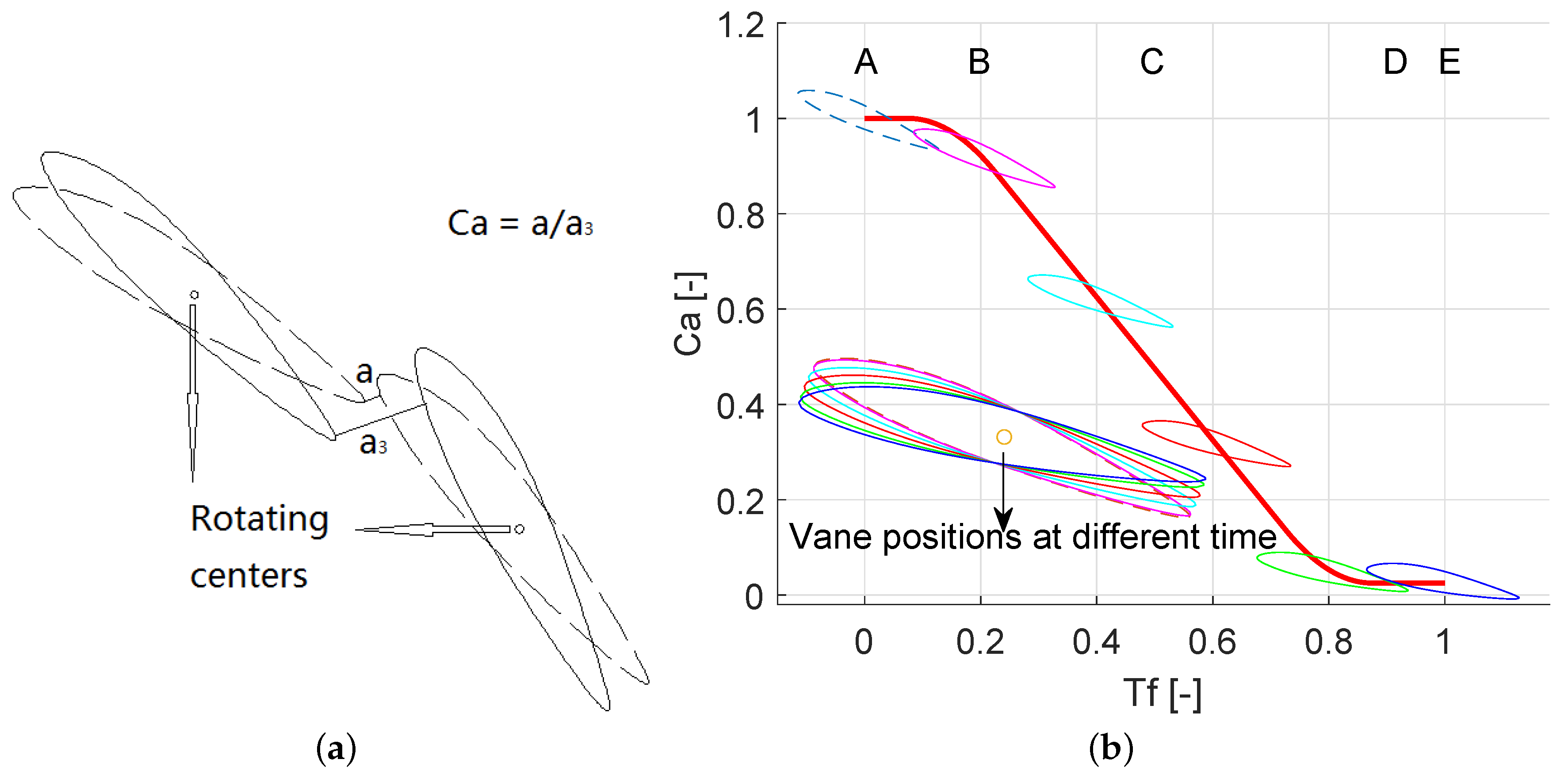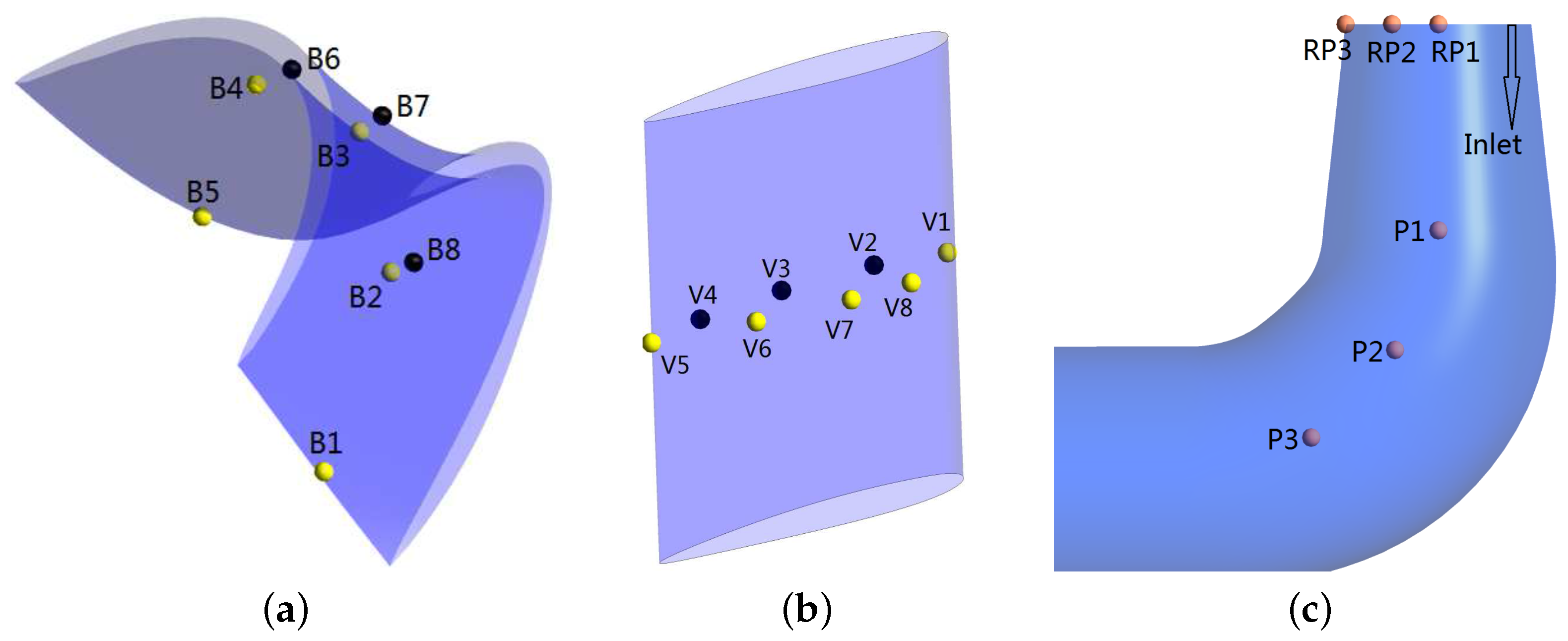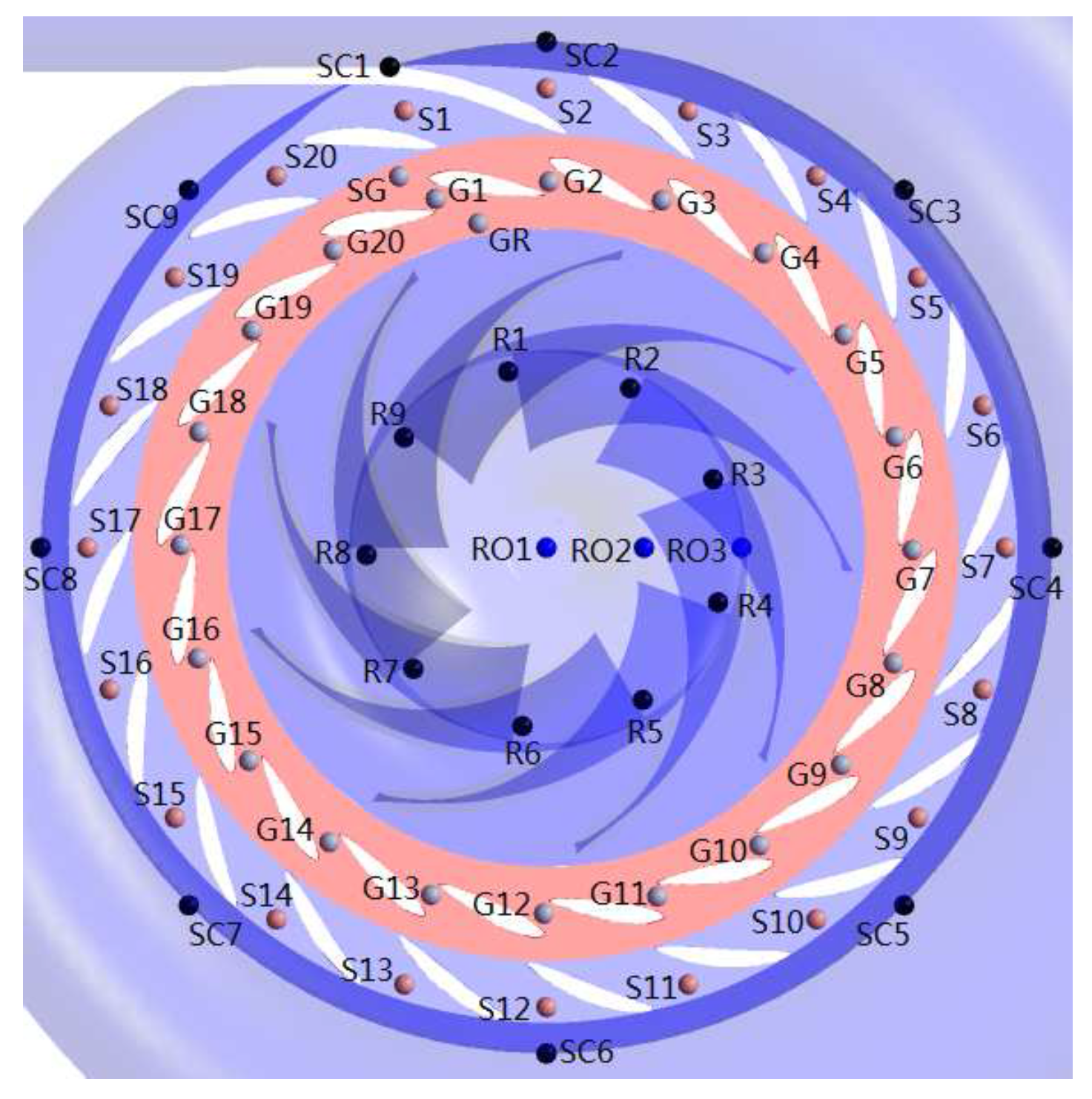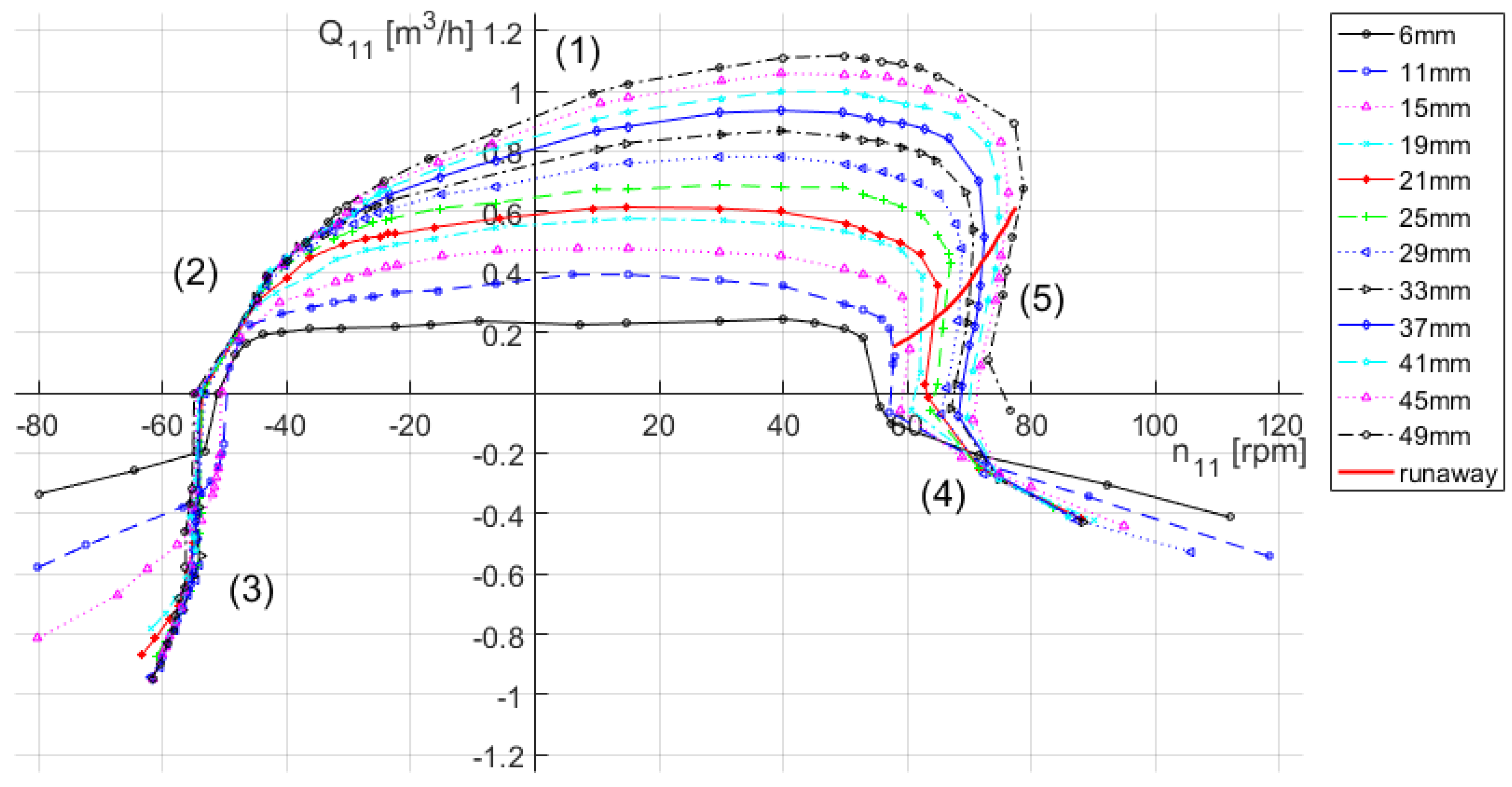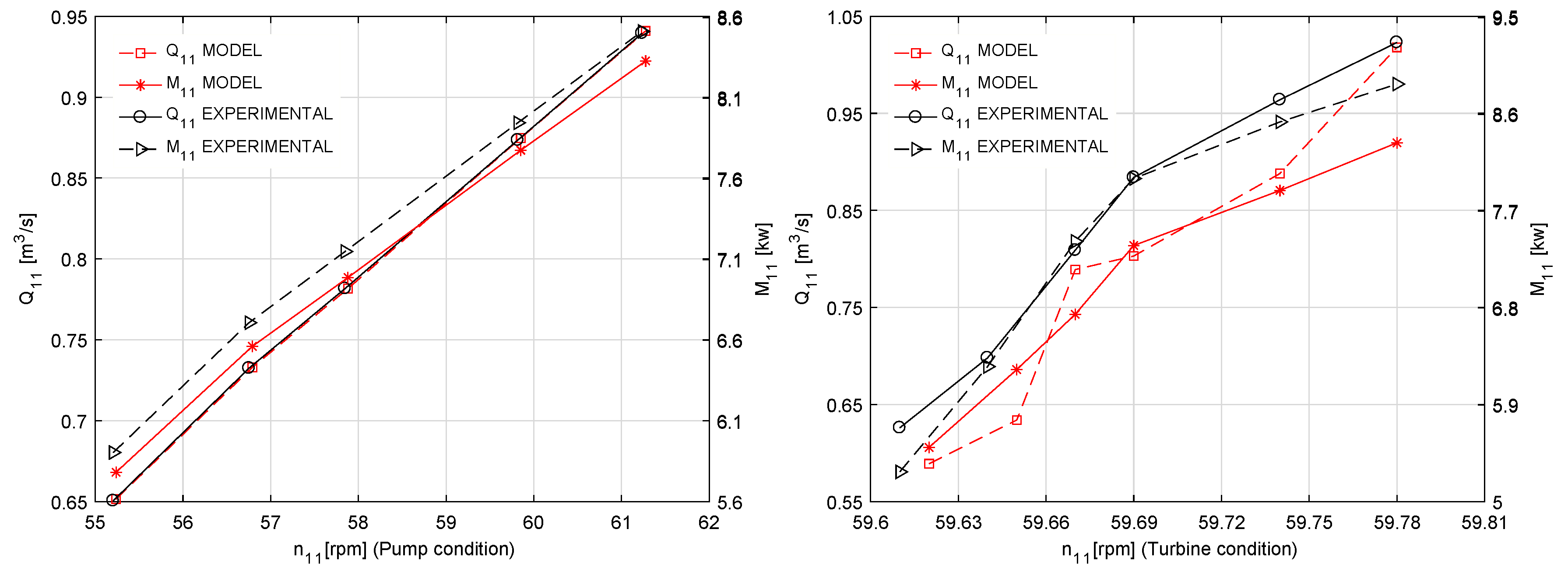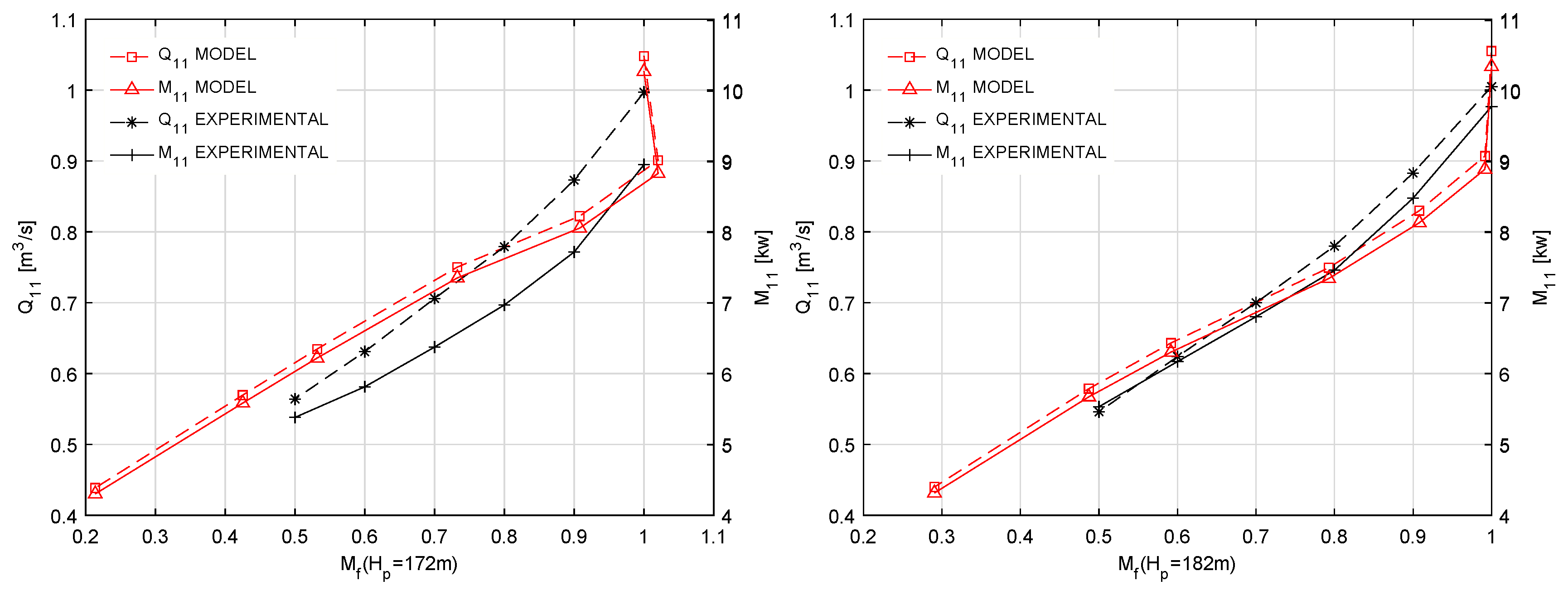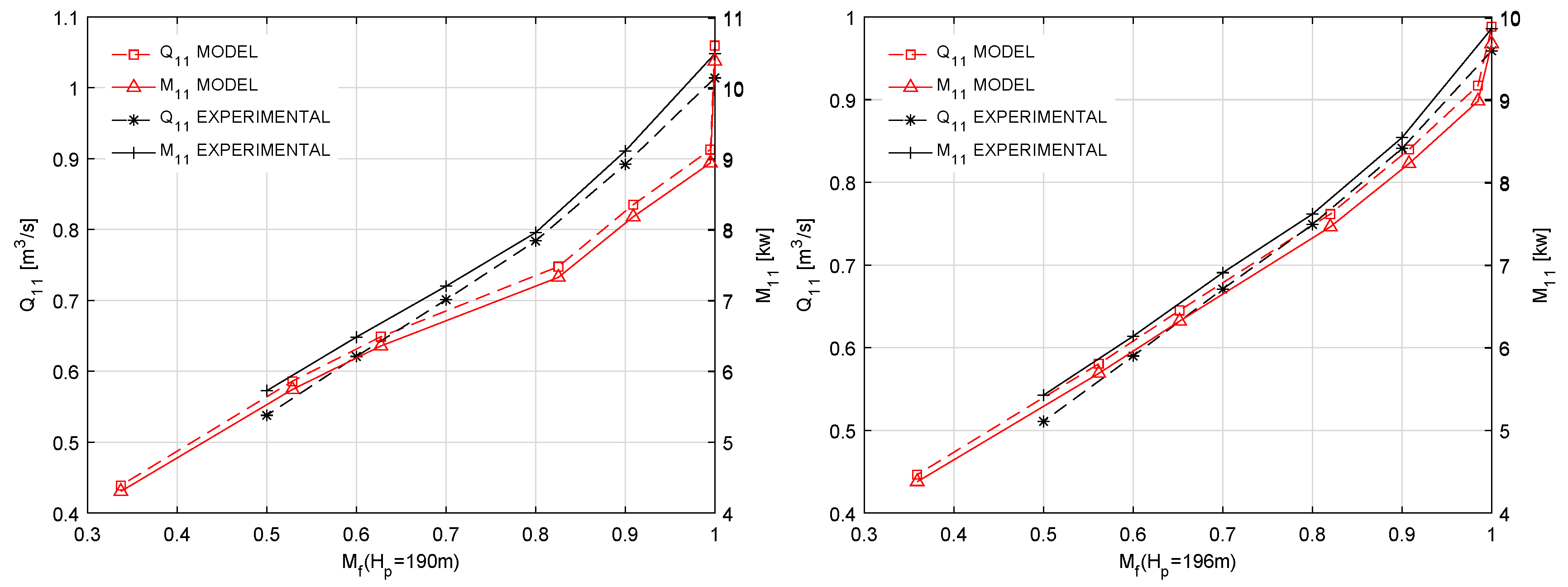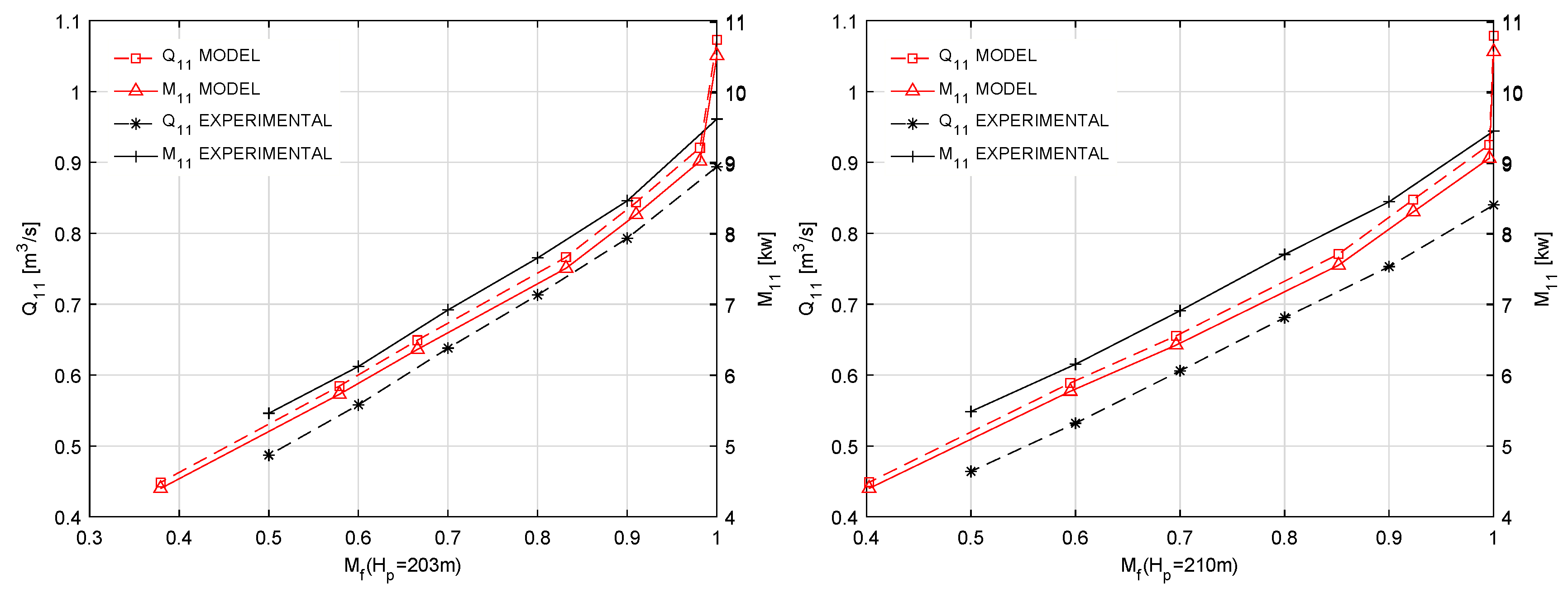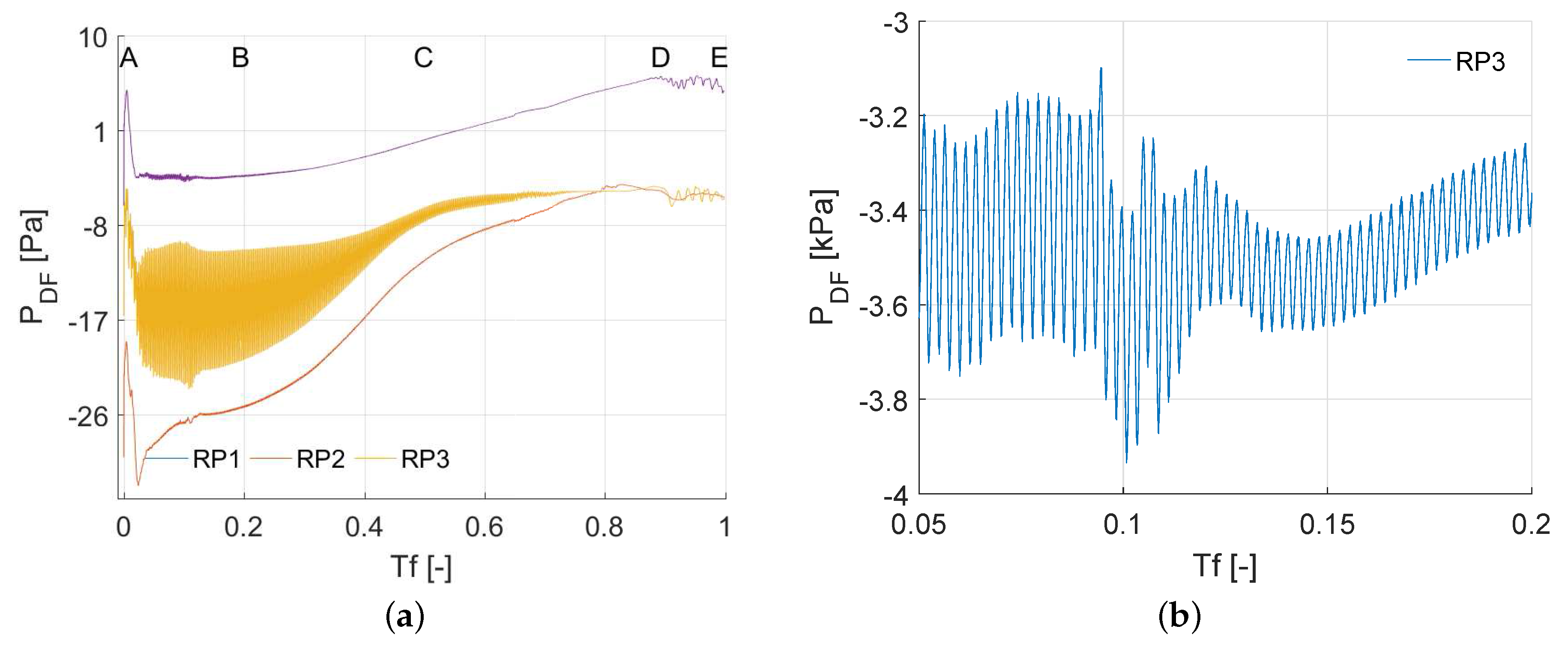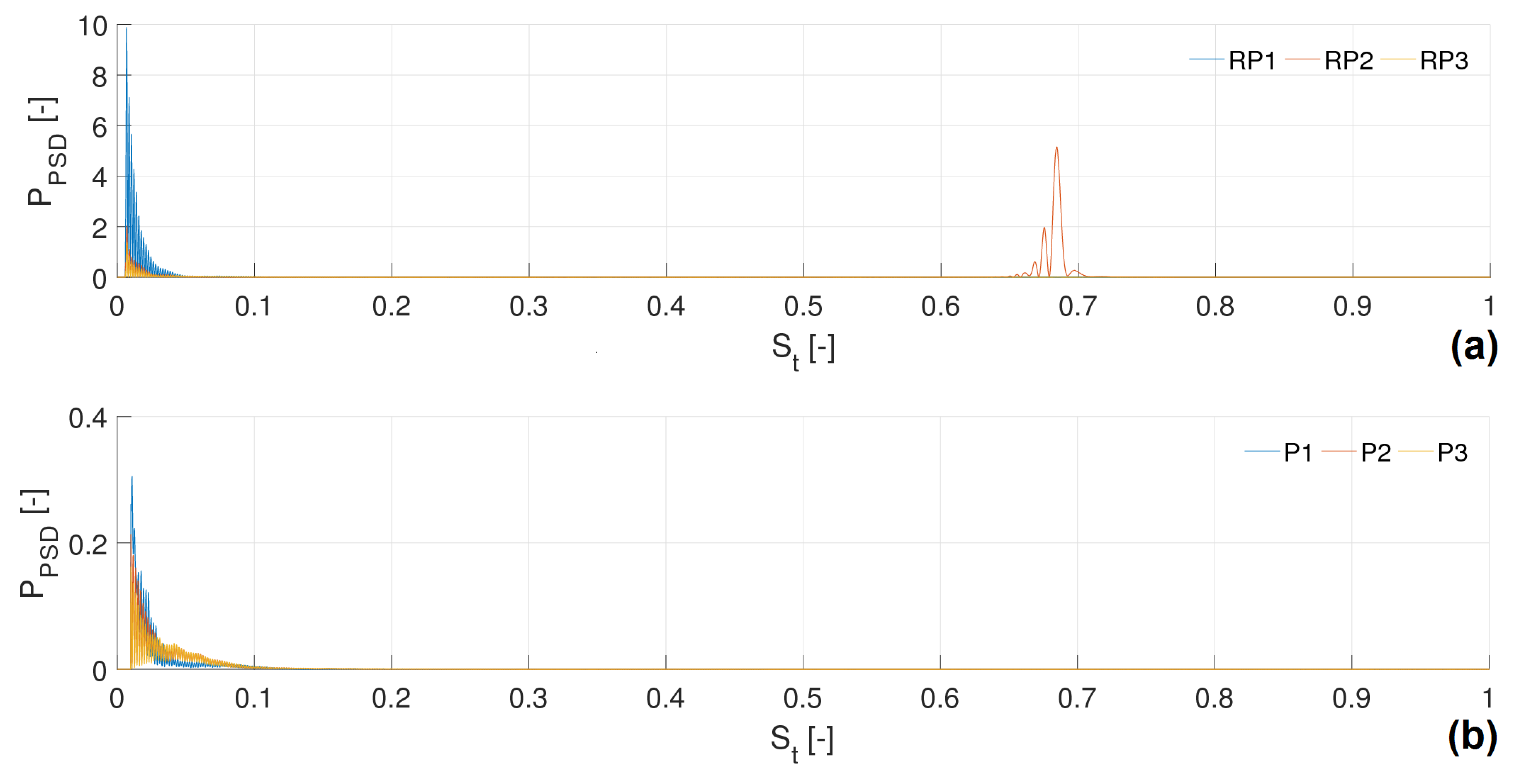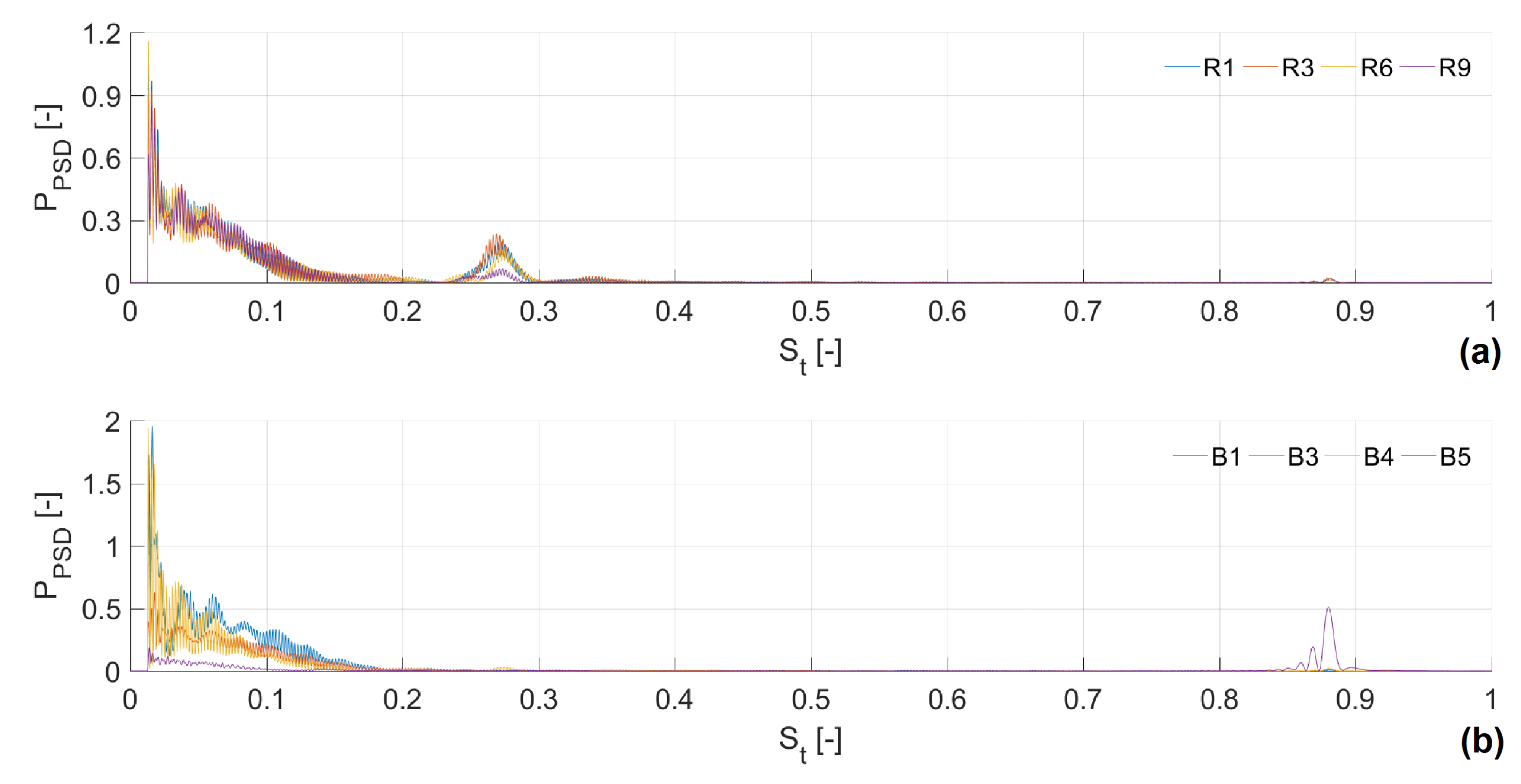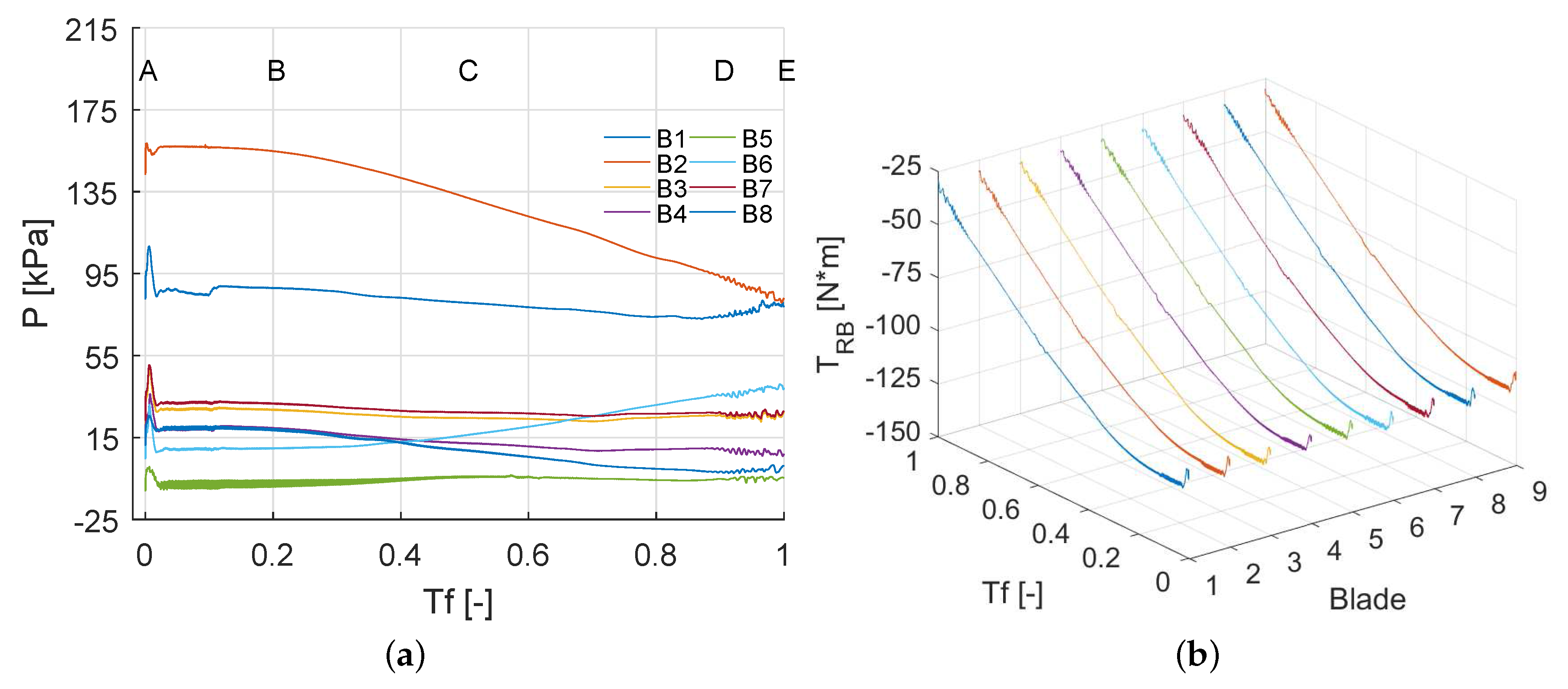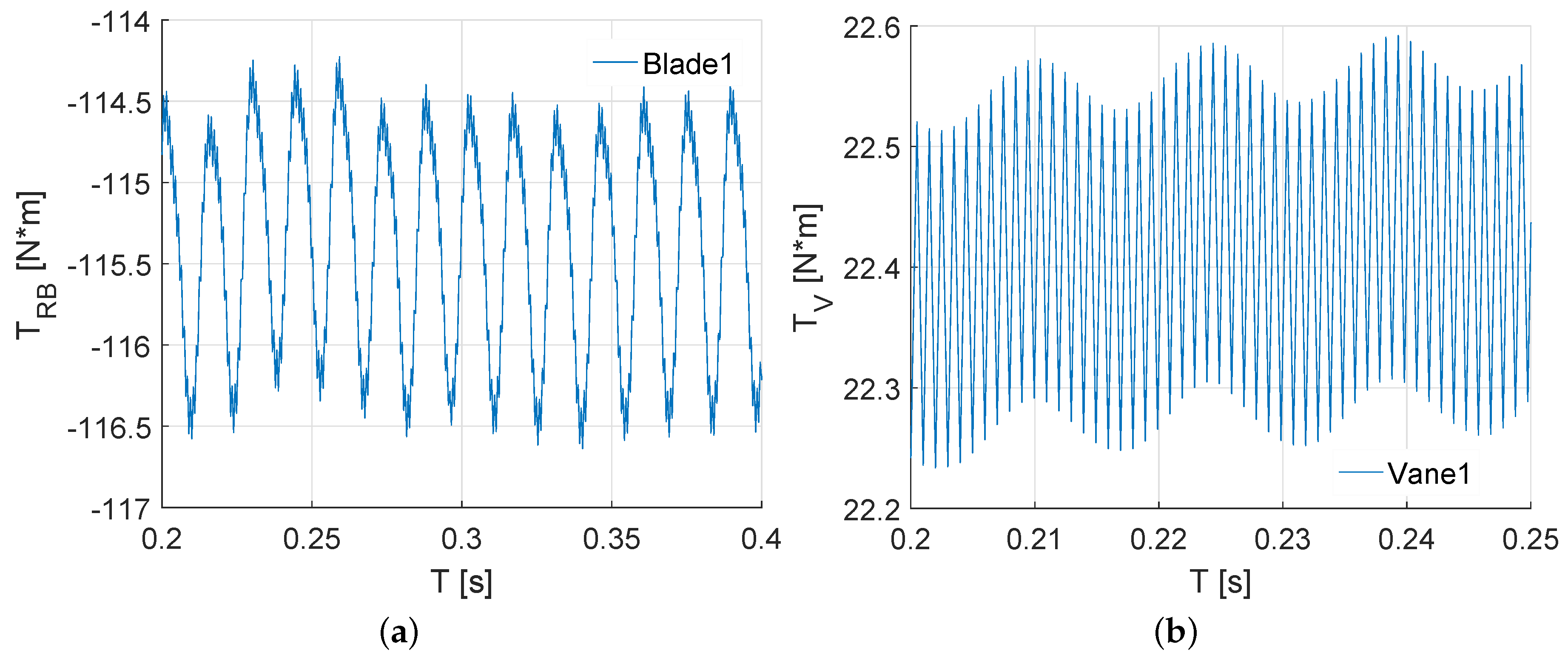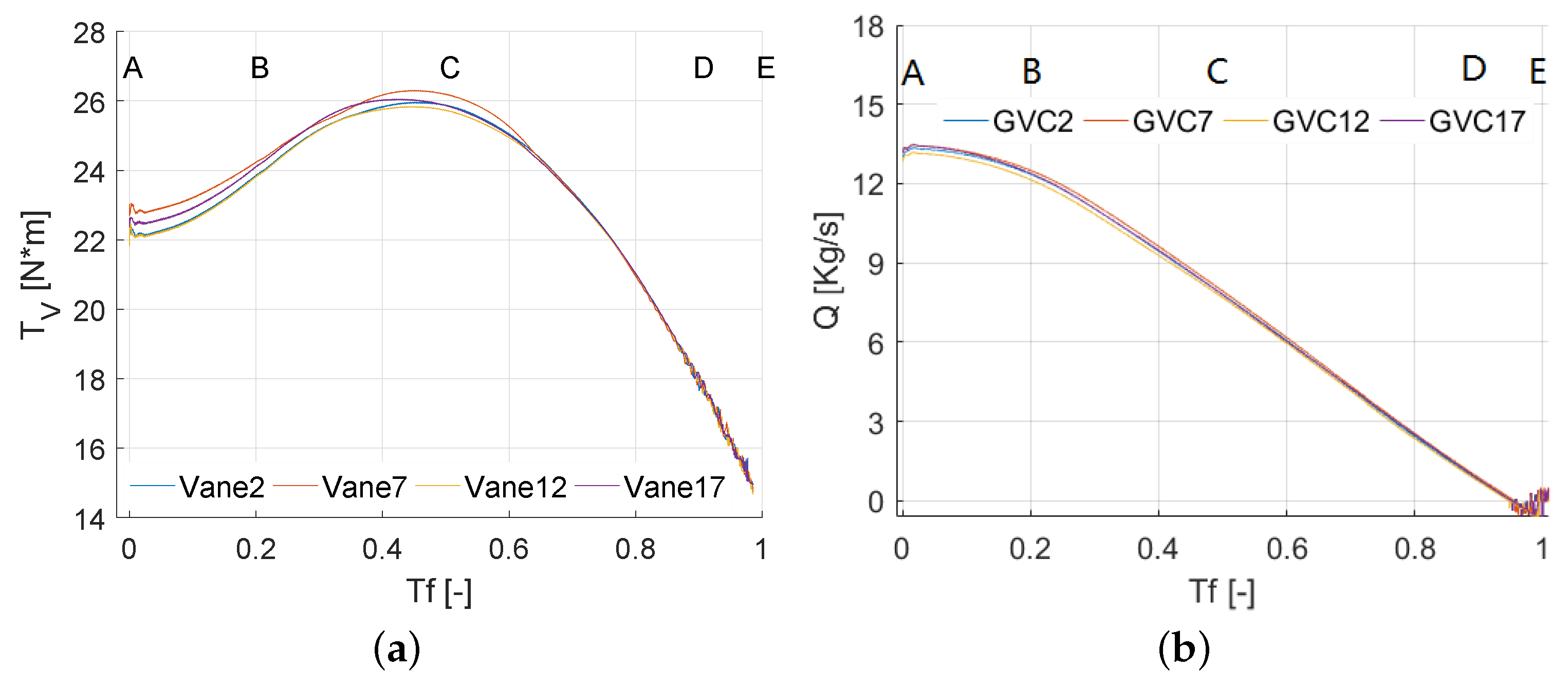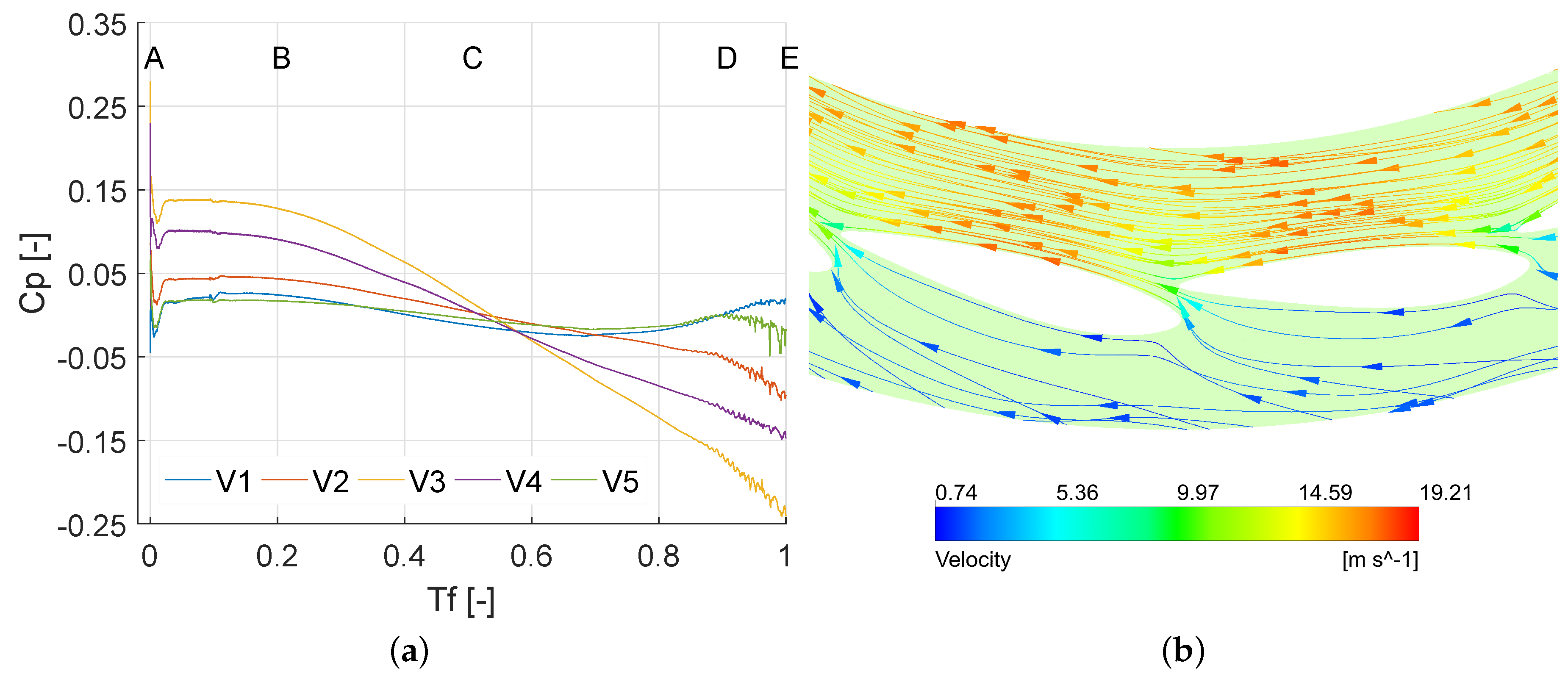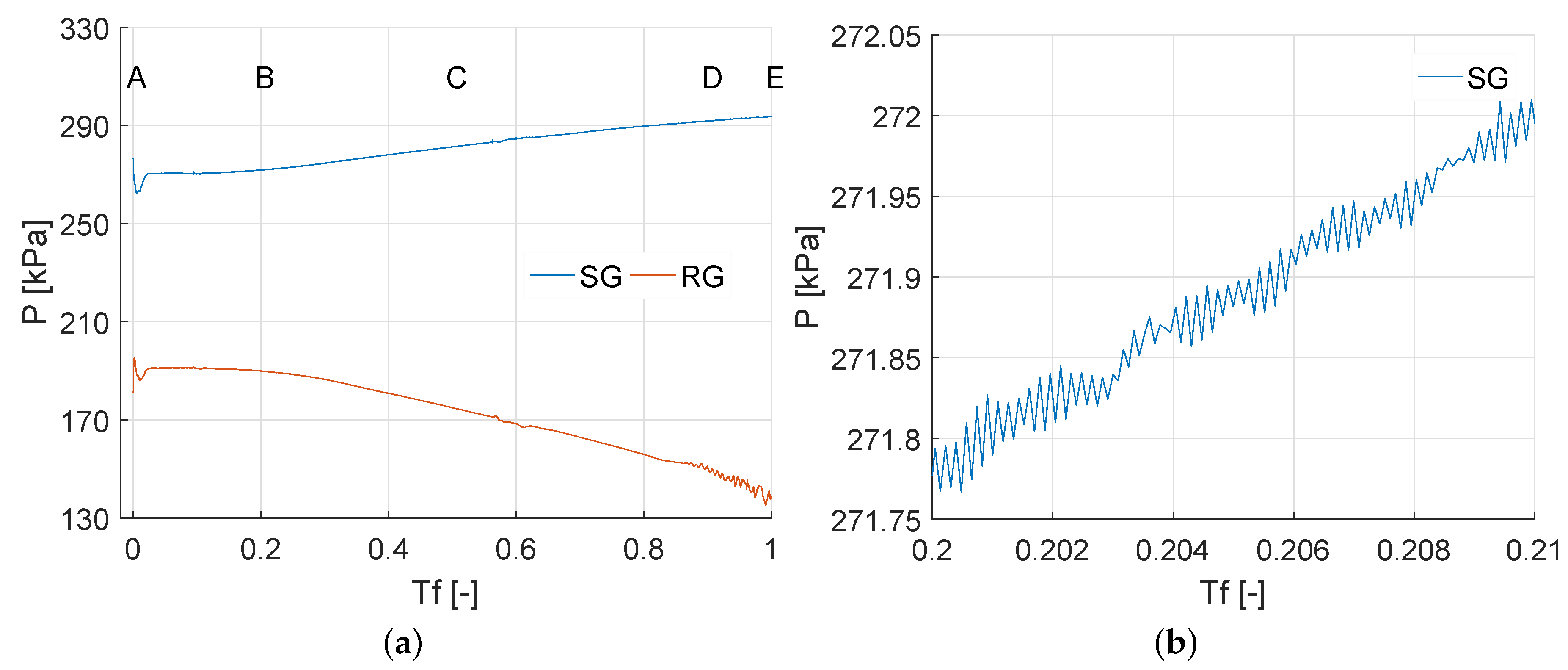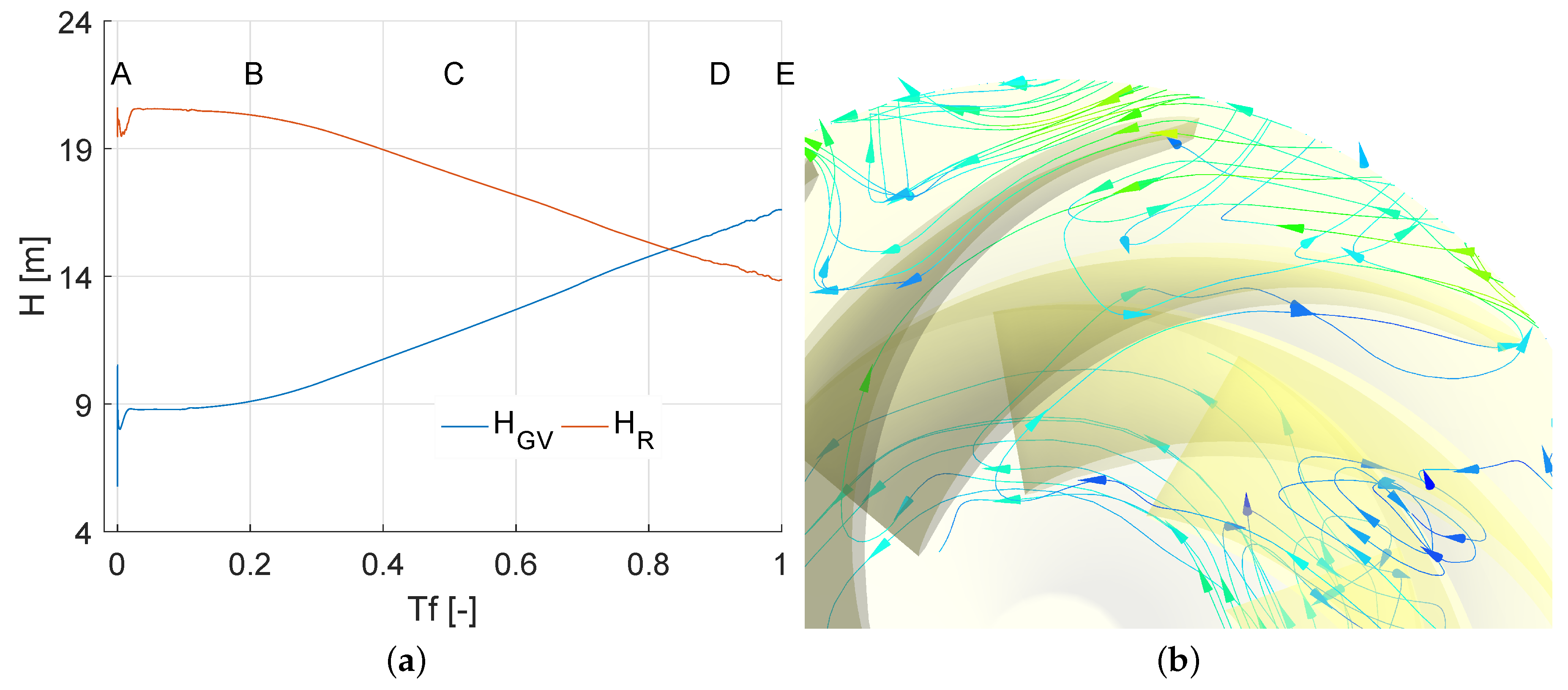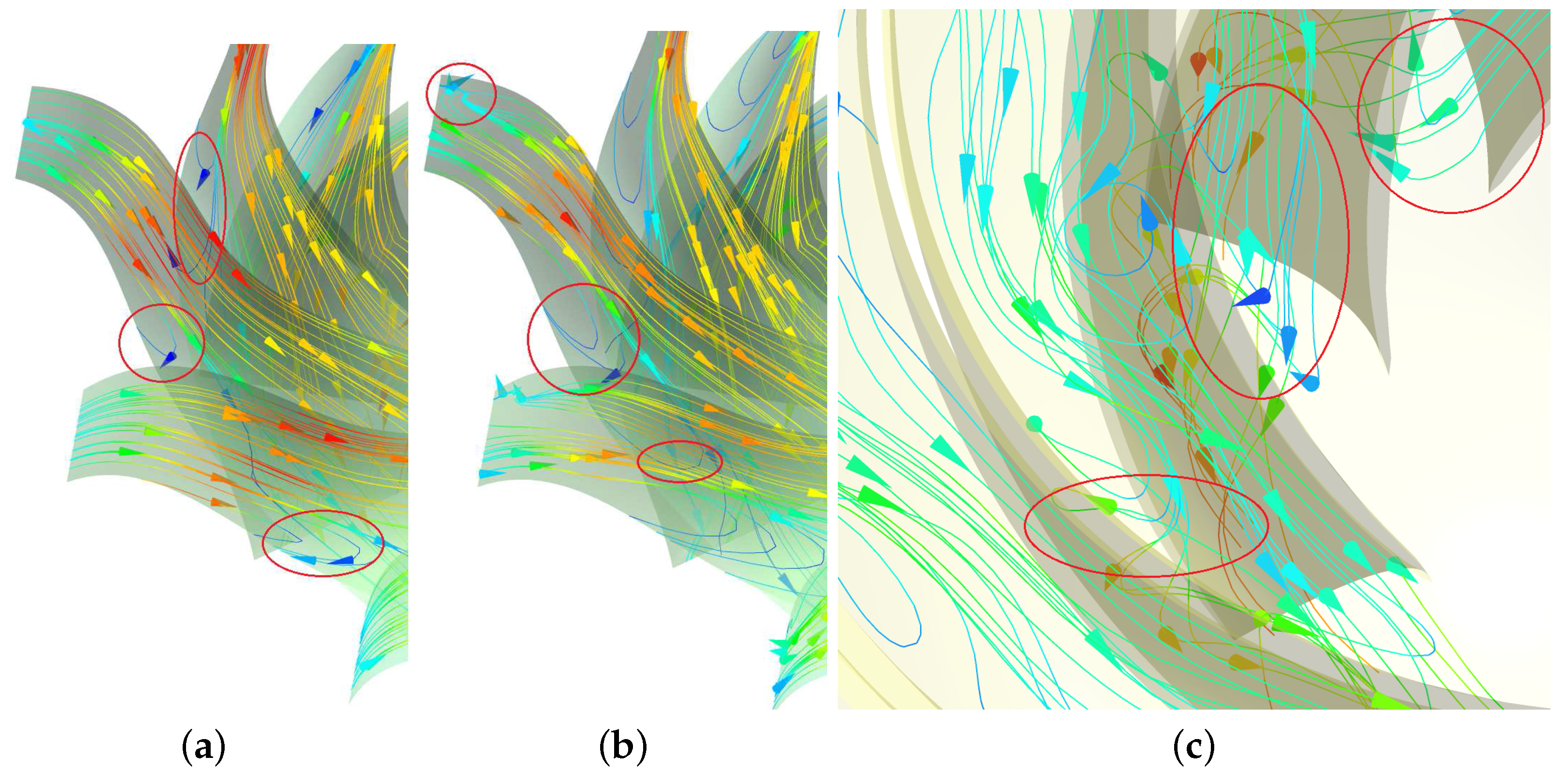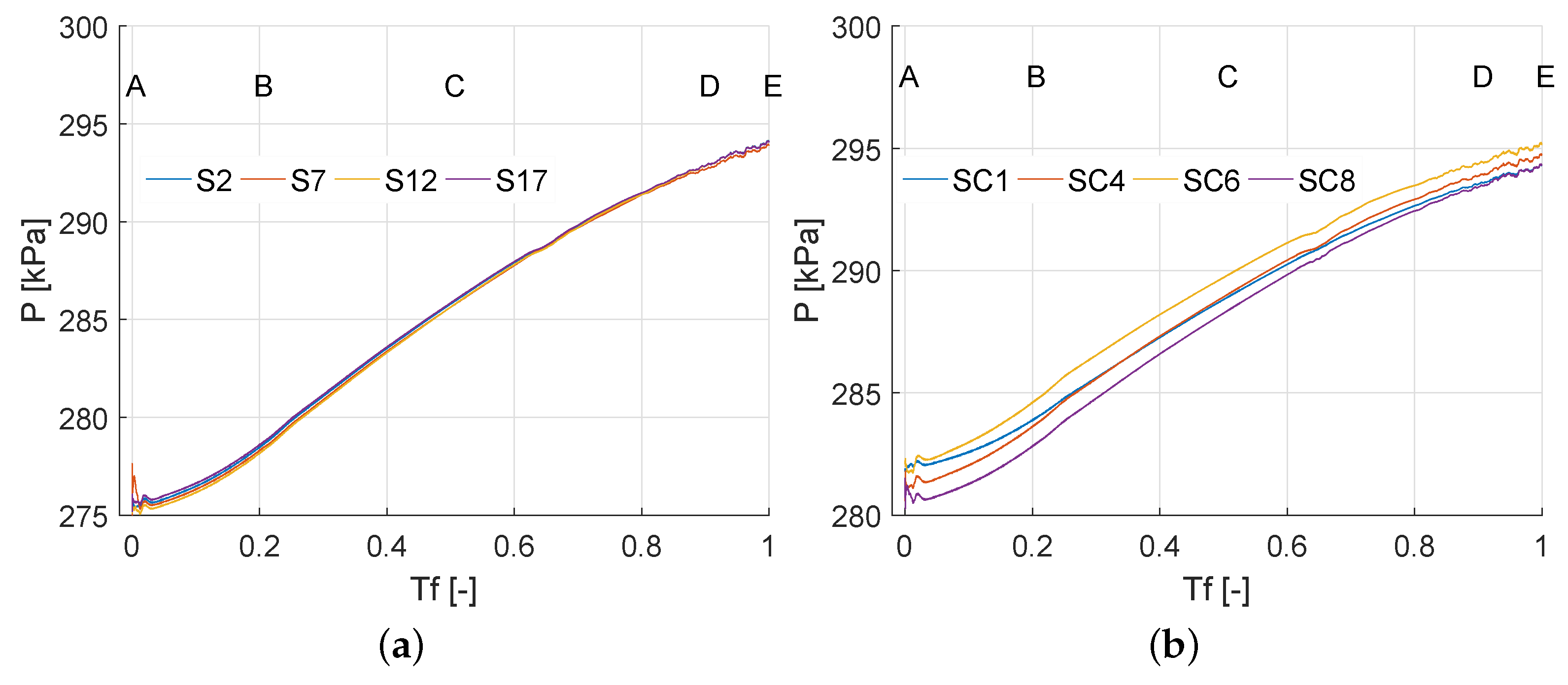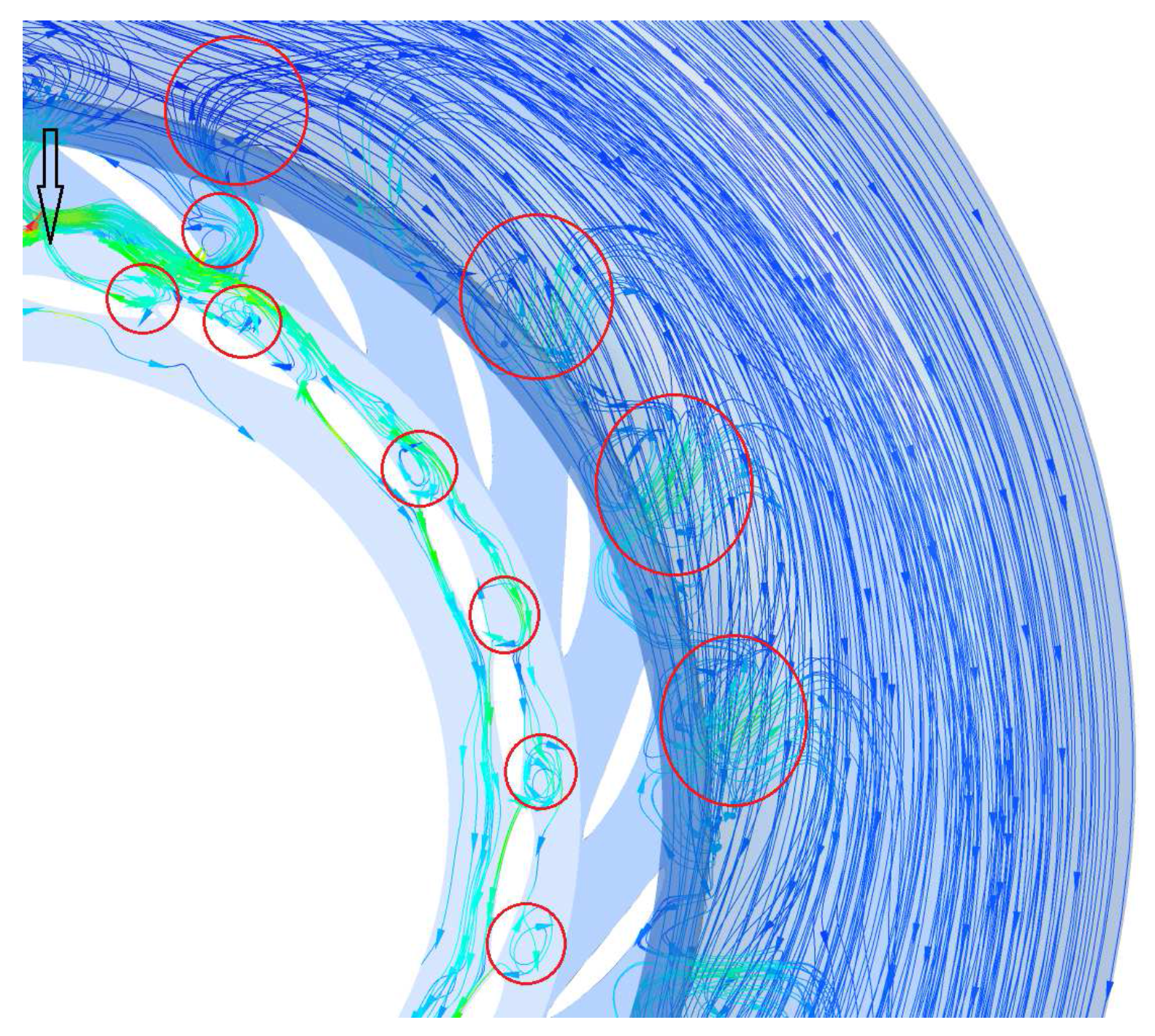1. Introduction
In the last few decades, significant and unpredictable developments in the research of new energy sources have made electrical energy storage become a key issue. At present, large-scale energy storage technology mainly consists of two different systems, compressed air energy storage (CAES) and reversible pumped hydro energy storage (RPHES). However, CAES require large caissons and still depend on fossil fuels; as a consequence, CAES applications are restricted to a large extent. On the other hand, most consider the RPHES as the best solution to store electricity indirectly: pumping the water upstream allows storing potential energy in the pump condition; the position potential energy is therefore converted into kinetic energy under the turbine condition, and finally, electricity can be generated and sent to the grid. The presence of associated regulations allowed a still ongoing strong deployment of renewable energy sources (RENS) technologies; however, due to the unpredictable evolution of RENS, RPHES needs to balance the frequency changes in electricity production and consumption. The trend seems to indicate that RPHES is experiencing a sustainable development, as stated by Barbour et al. [
1].
Reversible turbines are more popular compared to other forms of turbomachinery in the new generation of RPHES, due to the considerable cost effectiveness and high efficiency range. Furthermore, they gain a competitive advantage and have efficient switch connections between electricity production and consumption (Beevers et al. [
2] and Fisher et al. [
3]). A Reversible Pump Turbine (RPT) can deal with problems related to the conversion and input of energy into the grid, due to the need for switching between pump and turbine mode. However, during periods of changing conditions between pump and turbine modes, starting up and stopping of the unit and load rejection, there is the need to change the speed and high frequency to compensate the off-design conditions, as shown in the S-shaped characteristic curves. As a consequence, the unit performance, regulation capacity and efficiency are affected, and both cavitation and instability phenomena could appear. The change in load, together with frequent starts and stops, represents one of the most important characteristics of a pump-turbine: it allows one to counter the increased need for leveling the peak demand of electrical energy and to better balance the system. For these reasons, pump-turbines’ working conditions are particularly suitable to be investigated using unsteady analyses [
4,
5].
RPTs need to be quickly disconnected from the power system when load changes or unpredictable situations occur; in order to reduce the unit damage, caused by the sudden increment of rotating speed, the guide vane must be rapidly closed accordingly. In addition, pump-turbines are synchronized with the electrical grid during load rejection; however, the procedure could be slowed down by system oscillations caused by the unstable behavior: longer times greatly contribute to unit damage.
The oscillatory phenomena had been originally studied by Yamabe [
6]: the pronounced hysteretic behavior of oscillations in the values of pressure was observed and its interaction with unsteady cavitation patterns analyzed. Several authors carried out an in-depth study of the unsteady flow phenomena: Klemm [
7] gave a simple solution of the instability of the flow by detuning some guide vanes; Martin [
8] made a linear stability analysis to predict the occurrence of the oscillations. Afterwards, Dörfler et al. [
9] studied how stable operations on the machine could be achieved even in the presence of the instability at no load. In addition, several studies of Nicolet et al. in [
10,
11] investigated the severe problems of unstable behavior, which is induced by positive gradients of the pump turbine characteristic and also represented the time evolution of the damping for both the rigid and elastic water column modes. They finally demonstrated the higher instability of the elastic mode compared to the rigid mode. However, the above-mentioned analyses are not complete, and the requirements to limit the instability are not met: many RPHES also need to improve the stability in the period of rejecting and accepting load, in order to eliminate vibrations, to improve the S-curve characteristics and to cut down the surge pressure rises.
Recent studies have shown that the S-induced instabilities can be ascribed to flow phenomena, such as stationary vortex formation and rotating stall in the runner (Yin et al. [
12], Zeng et al. [
13] and Hasmatuchi et al. [
14]). However, other aspects regarding unstable behavior in the load rejection phase should be further investigated: the onset and development of the vortices in the runner channels and the reasons for the further enlargement and stabilization. On the other hand, it is necessary to find the cause of vibration and propose effective control measures to reduce the instability phenomena in order to ensure the safety of the unit in a long-term operation. In order to illustrate the accuracy of the analysis, the test case adopted for the validation of the numerical model is represented by the pump-turbine of the Xiangshuijian pumped storage plant [
15], and it has been widely studied by several authors [
16,
17,
18]. However, the analyses of the unsteady phenomena in pump-turbines are not simple, and often experimental and numerical results differ; furthermore, the inner flow in the machine is difficult to investigate, and studies of unsteady processes have many limitations.
In previous works, a linear closing law has been applied to various power plants characterized by adverse flow field effects [
19,
20]. In fact, the suggested closing laws did not completely reduce the instabilities, and the flow field characteristics still need to be improved. On the other hand, several authors adopted some fixed guide vane positions in order to simulate the closing process, which cannot accurately reproduce the entire dynamic process [
19,
21].
In the present paper, 3D numerical simulations are used to investigate the off-design conditions of the reversible turbine, and an automatic moving mesh technique has been implemented in order to continuously assess the unsteady flow characteristics during guide vanes’ closure; the procedure also guarantees a high mesh quality during the whole process of load rejection. Furthermore, a new closing method consisting of five stages is given by combining the results of steady-state test data and unsteady simulations under fixed conditions. In fact, achieving stability of the unit under no-load condition is difficult using the existing closing laws; hence, the definition of an improved method is extremely important.
2. Model Geometry and Spatial Discretization
The geometric model of the considered pump turbine is illustrated in
Figure 1. The fluid dynamic analysis involves the use of several commercial software and tools: Siemens Solidedge (Siemens2014, Siemens PLM software, Plano, TX, USA) [
22] and ANSYS ICEM (Ansys2016, ANSYS, Canonsburg, PA, USA) [
23] have been used to generate the geometry and mesh; the numerical simulations are carried out in ANSYS CFX 16 (Ansys2016, ANSYS, Canonsburg, PA, USA); and the post-processing analyses of data are based on MATLAB (MATLABR2016a, Natick, MA, USA).
The computational domain consists of different zones: a runner composed of 9 backward blades, 20 guide vanes, 20 stay vanes, the volute and the draft tube. The main geometry features are reported in
Table 1; a representation of the geometry with the measurements of the main diameters is reported in
Figure 2a; the characteristic parameters of the model include
Q = 297 kg/s,
H = 30 m,
n = 670 rpm, at the design point. The geometrical model considered in the analysis is about a 1:11 scaled geometry of the test rig model dimensions.
The analysis aims to investigate the unsteady flow field in the pump turbine during the phase of rejecting load, through closing guide vanes. The flow close to the no-load operating condition becomes highly turbulent, dominated by backflow regions, with the formation of the vortex, and partial pumping flows start to form in the runner channels. Additionally, the fluid behavior is severely unsteady: the performances are affected by the continuous formation of recirculation zones, as observed in [
24]. To set a realistic analysis, two requirements have to be fulfilled: the grid generation must be carefully carried out; meanwhile, the moving mesh technique requires a high quality definition of the guide vane domain.
In order to increase the accuracy of the numerical solution, hexahedral grids have been adopted in the whole computational domain using structured blocks, except for the volute and the stay vane. The runner domain, composed of a hub, a shroud and seven backward blades, is defined by about 1.93 M cells, while the guide vane zone, made up of 22 vanes, contains 1.52 M cells; it is worth noticing that O-type grids have been adopted for both the blade zones (runner blades and guide vanes). Due to the requirements for an accurate analysis of the vortex, the hexahedral mesh is also adopted in the draft tube (1.42 M cells) and tetrahedral meshes are used for the volute and stay vane.
Figure 2b illustrates the adopted topology for a runner blade and a guide vane, the connection between the different volumes is realized using interfaces.
Table 2 illustrates the characteristics of the meshes adopted in the zones of the model.
It is worth mentioning that, preliminary to the study, a mesh sensitivity analysis has been carried out by adopting five different grid sizes. The work is focused on the determination of the unsteady characteristics, and pressure pulsations are closely related to the unsteady flow.
The mesh sensitivity analysis, shown in
Figure 3a, highlighted a mesh independent solution from about 2.36 M elements (Point A); however, the local pressure pulsations appear to be correctly evaluated only with total number of elements greater than 3.63 M (Point B). In order to guarantee the capacity of the numerical solution to capture local pressure pulsations well in the load variation process, the mesh was further subdivided (Point C: 6.66 M elements). For further mesh elements’ increase (Point D), the results demonstrate that approximately only a 0.25% divergence in the average value of pressure fluctuations was found; therefore, total elements equal to 6.6 M has been used in the proposed analyses.
Figure 3b illustrates pressure fluctuations of monitoring Point R3 in the range of
from 0.04 to 0.09. Finally,
Figure 4 shows some details of the mesh in different regions of the model.
A method used for the computational analysis of a pump-turbine consist of re-defining the mesh for different configurations of the guide vanes; however, the procedure is affected by several problems and presents the drawback that only a few selected conditions can be simulated. For these reasons, in the adopted mesh-motion model, the grid is allowed to automatically deform based on 20 local coordinates: each guide vane can rotate around its own axis to change the position. Nonetheless, in the presence of large deformations, it might be difficult to modify the current mesh to avoid the generation of high-skewness elements. In order to ensure mesh quality during the moving of guide vanes, required for an accurate characterization of the flow field, the condition of a minimum face angle (
α ≥ 30°) was imposed. The initial mesh presents a high quality with the minimum face angles of elements close to 90 degrees; furthermore, at the end of the closure period, at least 60% of the mesh elements still present the minimum face angles of about 90°, and the minimum face angle of other elements is larger than 30°. In order to both increase the volume and preserve the quality of the prismatic elements close to the border, the “specified displacement” has been adopted as the mesh motion method, and the mesh stiffness has been set, the setting allowed to absorb the main deformation far from the body. On the other hand, all guide vanes move to specified locations with the mesh motion laws: according to the ANSYS CFX options, upper and lower surfaces were set using the “unspecified mesh motion” method, whereas the inlet and outlet of the guide vane domain adopted the “stationary” condition. As reported in the ANSYS CFX-PRE Users Guide [
25], the domain motion option “specified displacement” is defined as the domain displaces according to the specified Cartesian components, and using “unspecified mesh motion”, no constraints on mesh motion are applied to nodes. The movement is determined by the motion set on other regions: this allows one to move the nodes on the surface, if needed. Finally, when using “stationary”, the domain remains fixed in the absolute frame of reference. Meanwhile, another movement was also applied to the nodes belonging to vanes: they move along the vane profile in the opposite direction compared with the vane closure direction.
3. Numerical Model
In the last few years, as HPC resources have become available, a renewed effort in adopting the Reynolds stress models rather than reducing the turbulent eddies effects to a turbulent viscosity term has arisen. Reynolds stress models are computationally expensive, compared to a conventional one or two-equation models; however, they have been proven to archive a higher accuracy and better results under the correct flow conditions. Furthermore, according to Liu et al’s study [
26], SSG Reynolds stress and
k-ω models present larger deviation, and the relative error of the SSG Reynolds stress model is beyond 10%. The relative errors of
k-ε, RNG
k-ε, and
k-ε EARSM models are lower, limited to around 2%. Specifically, the description of internal flow with
k-ε EARSM has been demonstrated to be the most accurate. Finally, it is well known that reynolds-averaged navier–stokes equations (RANS) models cannot predict, with high accuracy, all flow details in each separated flow region [
26]. The above reasons lead to the formulation of the solution strategy proposed in
Table 3. Two preliminary steady analyses have been run setting different turbulence models, the RNG
k-ε and the
k-ε EARSM. In the present work, the detached eddy simulation was used for the unsteady calculations where the steady-state results were adopted as initialization. In the simulation of the rejecting load phase, the guide vanes were moving using a specified closure law, and the time step
s, equivalent to a rotation of 2°, has been adopted.
The detached eddy simulation (DES) model was proposed by Spalart [
27] in 1997 and first used in 1999. In recent years, DES has been successfully used in a large amount of cases including many industry applications [
28,
29]; it has proven to be more accurate in the presence of prominent separations in the flow domain and better able to capture the flow field details compared to other models [
30,
31,
32]. Furthermore, the DES method has great advantages: it can be applied at high Reynolds numbers, and it is suitable to solve geometry-dependent, unsteady three-dimensional turbulent motions, similar to the large eddy simulation (LES) model. The model combines the advantages of the RANS (for the near-wall regions) and LES (used in the free-stream) models; consequently, it has the potential to offer more accuracy than RANS at less cost than LES [
33].
The boundary conditions adopted for the model are reported in
Table 4. The total pressure condition at the inlet is combined with the opening condition at the outlet, due to the presence of the highly disturbed flow field in the draft tube. The turbulence parameters are defined by specifying the turbulence intensity and hydraulic diameter. The solid walls are defined as no-slip: scalable wall functions are used in steady simulations, whereas under unsteady conditions, automatic near wall treatment is applied. Finally, three couples of interfaces among different domains are connected through the general grid interface method.
The analysis was run in a workstation in parallel mode using 32 cores (Intel(R) Xeon(R) CPU E5-2650 @ 2.00 GHz) and 128 Gb of RAM, and the computational time to analyze the whole unsteady process was about 20 days.
4. Closing Law of Guide Vanes during Load Rejection
The time needed during the shutdown operation of a pump turbine should be limited, due to the harmful effects of prolonged operation at shut-off. In fact, the energy of flow is converted into heat, and it results in a dangerous increment of temperature for both the fluid and the unit itself, at instant shut-off. For these reasons, it is necessary to use suitable laws to close the guide vanes in the unsteady operation. Wylie et al [
34] introduced one-dimensional equations to govern the changes of guide vanes opening by describing unsteady pipe flow. Two dependent variables are considered, the centerline pressure
and velocity
, where
x represents the distance along the pipe and
t is the time. The linear closing law has been later applied to various power plants characterized by adverse flow field effects; specifically, the laws of prolonging the closing time (fast-slow or slow-fast sequences [
19,
20]) were proposed according to different cases.
Dynamic stresses caused by hydraulic excitation lead the machine to operate in an unsafe state and affect the life of the unit with the long-term operations under special conditions. Especially in the load rejection phase, the magnitude of radial vibrations could greatly increase, resulting in the damage of the unit; as a consequence, it could not be restored to the initial conditions after loosing load. According to Liu et al. [
19], when the valid guide vanes’ closing time is longer, the volute maximum hydrodynamic pressure becomes smaller. Therefore, improved guide vanes’ closing methods for the normal operation of RPHES are very necessary, and a special closing rule, with five stages, is hereby proposed. The relative opening (
) of guide vanes is defined as the opening at best efficiency point (BEP) divided by the opening at the considered time, as illustrated in
Figure 5a.
Figure 5b shows the variation of the relative opening with the closing law.
The proposed closing method was built by combining steady-state test data (obtained from Xiangshuijian pumped storage plant [
15]) and unsteady simulations under fixed conditions. In order to reproduce the real flow state and analyze the influence of the unsteady flow, each guide vane was continuously and independently adjustable. It is worth mentioning that
was not equal to zero at the total closure point, for reasons related to the manufacturing precision: guide vanes experience abrasion after the units run for a long time, and a relatively small gap remains at closure. Therefore, the ideal state of
and the
kg/s are not realistic; on the other hand, in ideal conditions, the flow is zero when guide vanes are completely closed. In this case, the fluid is divided into two separate parts by guide vanes; furthermore, it is impossible to guarantee the high quality of the structured mesh when guide vanes are completely closed, especially for dynamic mesh motion. Consequently, the process of load rejection lasts about 6.41 s (valid time) after five stages, and the relative opening of guide vanes results in 6.85%. The numerical data were acquired after six revolutions, when a stable convergence was reached, and during this period, 79 complete impeller revolutions were completed to achieve the whole operating process. All simulations were carried out on the HPC with efficient parallelization, and two nodes of an HPC cluster were used in the unsteady simulations. The computation time per each revolution is about six hours with the mesh C (
Figure 3a).
Different monitoring points have been chosen in order to probe the variations of the hydrodynamic variables during the analysis, as will be better clarified in
Section 6.
Figure 6 and
Figure 7 provide a schematic representation of the locations of the monitoring points used in the blade, guide vane and draft tube domain.
5. Validation of the Numerical Model
The numerical model adopted for the analysis represents about a 1:11 scaled geometry of the considered machine: the pump turbine was initially designed for the pump condition and tested for the turbine condition. The experimental campaign was carried out at Xiangshuijian pumped storage plant [
15].
Figure 8 shows the characteristic curves of the machine for different values of vane openings: the rotating speed was measured using a counter to register the number of complete revolutions of the shaft (
n) with an accuracy of
rpm; the values of the pressure were measured by transmitters and discharges were obtained from electromagnetic flowmeters. The calibration of the instruments was performed on site. The instruments’ precision can be described by the total accuracy of the experimental stand: the error of the hydraulic comprehensive experiment bench is less than 0.25%, as reported in [
35].
Computational analyses were carried out at different guide vane openings and compared with experimental data in order to assess the accuracy of the proposed model. As
Figure 9 shows, the calculated curves are in agreement with the experimental data.
From
Figure 10,
Figure 11 and
Figure 12, the validation for turbine mode is further investigated: the results are in accordance with the measured data; the values of
are close to the experimental data, whereas
presents errors of about 2% for the considered vane openings (near the design point). On the other hand, points far from the design condition present larger differences of
and
; however, the errors in terms of
are lower than 11%. Considering the discharge capacity, the maximum error is about 13%, when the machine works in extreme off-design conditions. It can be concluded that the numerical model is accurate to properly describe, for most of the working conditions, the physics of the considered unit.
7. Conclusions and Future Works
The unsteady phenomena in the reversible pump-turbine have been analyzed through the use of automatic mesh motion where the guide vanes’ movements are realized through the adoption of dynamic mesh based on a given closure law. The results demonstrate the good accuracy of the model in the description of the internal flow field, and the unsteady flow evolution in each domain can be continuously observed for different openings.
Signals from monitoring points have been analyzed focusing on the unsteady flow characteristics; the values of the mass flow, torque and pressure fluctuations are considered in both frequency and time-frequency analyses. The development of vortices has also been identified during the continuously dynamic guide vanes’ motion. The comparison of the results with experimental data proves that the closure law is suitable to model the unsteady phenomena.
The mass flow value in the guide vane channels decreased with the smaller throat diameter, and this led to the fluctuations of pressure, head and torque. Furthermore, the water ring in the vaneless spaces gradually grew and became thickened; furthermore, it circumferentially rotated in the direction of the runner. Results showed how the formation of the water ring represented one of the main reasons for the vortex transitions between the runner channels. In addition, the flow evolution in the draft tube during the period of load rejection could be characterized in order to observe and identify the different scale of vortexes leading to different magnitudes of vibrations in the machine. In the proximity of the closing point, a significant reverse flow was registered in the guide vanes; in the space between the fixed and guide vanes, significant swirls appeared, and as a consequence, the water in the volute did not flow along the walls, resulting in shock loss. The present analysis is overall in a good agreement with the other models proposed in the literature, and it can be also applied to different reversible pump turbines under generating mode. However, the analyses of the development of unsteady phenomena were not sufficient for the determination of the S characteristics.
Future studies could also include the analysis of vibrations during the whole dynamic movement of guide vanes, an aspect strictly related to safely issues and, hence, to the life of the unit. Furthermore, the analysis of the noise is also an important aspect to be considered; these implementations will be part of the next research stage, following a similar approach, which has been proven in the previous work [
36].
